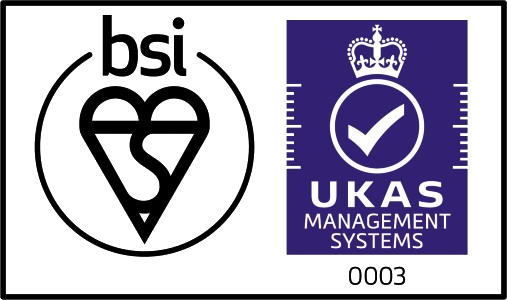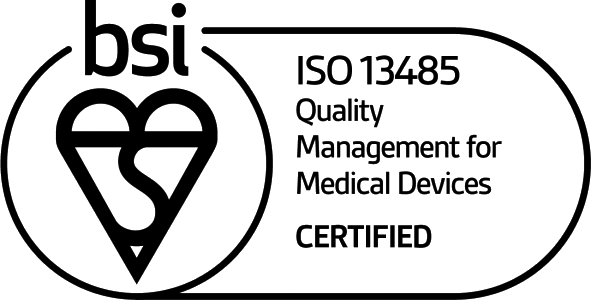• Strength of ADM
Relevance:
• Strength is central to how an Acellular Dermal Matrix (ADM) performs during surgery. Factors include suture retention, suture pullout, and device integrity under tension. Post-op, critical factors include mechanical loading characteristics of the ADM, particularly in procedures such as abdominal wall reconstruction.
TEI Products:
• The biological make-up of bovine dermis (our source material), including its inherent collagen fiber architecture, leaves TEI’s products unmatched in available thicknesses (up to 4 mm) and mechanical strength.
• Product thickness directly correlates with product strength, so the thicker the product, the stronger it is. (SurgiMend 3.0 is 2-4x stronger than available human and porcine dermal soft tissue repair matrices.)
• 100% of our processed ADM material is extensively tested for consistency and must meet defined specifications, including minimum mechanical strength requirements where applicable.
• Our products continue to provide integral strength well beyond the initial surgery; unlike many other non-crosslinked ADMs, they are not degraded by a detrimental foreign-body inflammatory response.
• TEI’s products, therefore, are the best choice to strengthen and reinforce the repairs required in the most challenging cases.
Competitive Products:
• Many ADMs by other companies are derived from human cadaveric dermis, which includes source material derived from elderly donors with frail skin.
• Several ADMs by other companies use porcine dermis as their source material. Porcine dermis is susceptible to tearing because of structural defects created by 1) hair follicles that perforate the entire dermis and 2) regional inconsistencies in the weave pattern of the collagen fibers.
• Frequent mechanical failures—ripping, tearing, and bulging—have been reported for products derived from porcine and human dermis. Data in the MAUDE Database and a recent study by MD Anderson show that products derived from porcine dermis may not have the same biomechanical strength properties as those derived from bovine sources.
• Source Material
Relevance:
Physicians and patients benefit from having Acellular Dermal Matrices (ADMs) derived from tissue sources that:
• are always in their healthiest stages of life and are highly consistent from one to the next
• contain high levels of Type III “healing” collagen (associated with scarless and rapid healing)
• are inherently strong – not prone to tearing, yet soft and supple
• allow for products in a broad range of thicknesses and sizes, ensuring the most appropriate device thickness, strength, and size combination is available for each procedure, technique, and patient
• are able to undergo biotech processes that render them so pure, they do not elicit a detrimental foreign-body inflammatory response upon implantation or application
TEI Products:
• Years of research evaluating human, porcine (pig), and bovine (cow) source materials and ranking their benefits in all forms of soft tissue repair led TEI to select bovine dermis as the ideal source material.
• Bovine dermis comes to us as a direct by-product of the food, dairy, and leather industries.
• TEI selects its source materials to ensure tissues are in their healthiest stages of life (fetal and neonatal), which provides for Type III (“healing”) collagen levels three to five times higher than competing products. Type III collagen is associated with scarless and rapid healing.
• The strength and resilience of bovine dermis make it the ideal source material for our sophisticated biotech processes that prepare, purify, and terminally sterilize our dermal matrix devices. No other dermal repair scaffold offerings available today are known to be stronger, offer a more muted inflammatory response, heal more rapidly, or be more compatible in the human tissue healing process.
Competitive Products:
Human derived:
• Many competitive products are derived from human cadaveric or donated human tissue. The majority of these products are available only as tissue-banked products, which are not regulated as medical devices and for which the FDA allows only minimal processing.
• Tissue-banked products typically do not include terminal sterilization or viral inactivation steps. The absence of blood-borne pathogens cannot be guaranteed.
• The human cadaver/donated tissue supply is solely dependent on availability of donated tissue; there can be tremendous variability due to the source’s age and/or prior health conditions.
• Adult human dermis has 80% less Type III “healing” collagen levels than those found in the fetal and neonatal bovine source material used by TEI Biosciences.
Adult porcine dermis derived:
• Porcine dermis is susceptible to tearing because of structural defects created by 1) hair follicles that perforate the entire dermis and 2) regional inconsistencies in the weave pattern of the collagen fibers.
• Adult porcine dermis has 80% less Type III “healing” collagen levels than those found in the fetal and neonatal bovine source material used by TEI Biosciences.
‘Other’ sources derived:
• Products derived from other xenogeneic sources (intestinal submucosa, pericardium, bladder, etc.) are not available in comparable strengths, sizes, thicknesses, consistency, and levels of Type III collagen as those supplied by TEI Biosciences.
• Thicknesses & Sizes
Relevance:
• Thicker products are stronger products. Strength is central to how an ADM performs during surgery (suture retention and pullout) as well as in terms of the mechanical loading characteristics it provides the patient after surgery, specifically in specialties such as abdominal wall reconstruction.
• Availability of larger sizes helps eliminate the need to quilt together multiple small pieces, a procedure that prolongs surgery and creates vulnerable suture lines.
TEI Products:
• Our product offering is unmatched in availability of thicknesses, including 1, 2, 3 and 4 mm. SurgiMend 3.0 and 4.0 (3 mm and 4 mm thick, respectively) are popular with physicians who are looking to provide maximum strength of repair for patients undergoing hernia repair in abdominal wall reconstruction.
• TEI offers products as large as 25 cm x 40 cm.
Competitive Products:
• TEI is unmatched in its offering of available thicknesses and sizes.
• Agents
TEI’s collagen matrix technology is able to carry agents that can play specific roles in the reconstructive process. We continue to explore the science of binding antimicrobial agents, different types of growth factors, and cells to our matrix technology, holding the future promise of faster healing and better outcomes. In doing so, TEI plans to deliver solutions for unmet clinical needs.
• Sterility Assurance Levels
Relevance:
• Products with high sterility assurance levels provide higher protection against the presence of blood-borne pathogens and transmission of disease.
TEI Products:
• Our products are terminally sterilized via an ETO process, providing a 10-6 SAL (Sterility Assurance Level), eliminating the risk of blood-borne pathogens and transmission of disease. TEI’s manufacturing process also includes a viral inactivation step validated to ensure inactivation of potentially contaminating virus classes, including enveloped & non-enveloped RNA and enveloped & non-enveloped DNA virus.
Competitive Products:
• Many Acellular Dermal Matrix (ADM) products from other providers/manufacturers are minimally processed and/or bathed in antibiotics and as such do not provide the same level of sterility assurance as those from TEI. These products cannot guarantee lack of transfer of blood-borne pathogens, including all forms of hepatitis and/or HIV.
• Processing
Relevance:
• Different tissue-processing methodologies can produce Acellular Dermal Matrix (ADM) devices with post-implantation responses that differ significantly, including:
• A classic foreign-body encapsulation similar to that of a permanent implant
• Rapid or slow degradation/resorption
• Population by local fibroblasts and supporting vasculature to generate new, metabolically active tissue
• ADMs that are minimally processed (i.e. tissue-banked products) are typically non-sterile, bathed in potentially antigenic antibiotics and preservatives and other retained components that the host perceives as ‘contaminants,’ leading to inflammation and, ultimately, the matrix’s degradation. This response results in only temporary tissue reinforcement.
• Although artificial chemical crosslinking was initially thought necessary to limit the foreign-body reaction to an implanted non-autologous tissue and preserve implant integrity, it is now appreciated that the latter can be achieved without the need for crosslinking.
• Only ADM processes that result in high sterility assurance levels and include a validated viral inactivation step eliminate the risk of blood-borne pathogens and transmission of disease.
• Sophisticated biotech processes now allow for ADMs to be lyophilized (freeze-dried), resulting in products that re-hydrate rapidly (1-2 minutes), have a multiple year shelf life, and require no refrigerated storage.
TEI Products:
• Our products are terminally sterilized via an ETO process, providing a 10-6 SAL (Sterility Assurance Levels), eliminating the risk of blood-borne pathogens and transmission of disease. TEI’s manufacturing process also includes a viral inactivation step validated to ensure inactivation of potentially contaminating virus classes, including enveloped & non-enveloped RNA and enveloped & non-enveloped DNA virus. Our process negates the need to bathe the ADM in antibiotics during processing and while packaged.
• TEI’s process incorporates a lyophilization (freeze-dry) process which generates a product that:
• requires no refrigeration
• offers up to five years of shelf life
• is highly porous, re-hydrating rapidly and quickly able to absorb the host’s blood, cells, growth factors, and cytokines at the time of implantation or application
• TEI’s sterilization, viral inactivation, and lyophilization steps eliminate the need for using potentially antigenic antibiotics and preservatives.
• TEI has found that it is possible to generate an ADM that persists, without the need to rely on crosslinking.
• When implanted or applied, our technology’s purity, sterility, and nativity minimize detrimental foreign-body inflammation to provide a matrix that is rapidly revascularized and repopulated with patient cells, generating new, metabolically active tissue that provides prolonged reinforcement during healing.
Competitive Products:
• A non-crosslinked ADM biomaterial derived from minimally processed human cadaveric dermis will experience degradation/resorption, impacting the tissue repair for which it was used.1,2
• Chemically-crosslinked ADMs will lead to recognition as a foreign body. The triggered host–implant interaction (encapsulation) is similar to that of a synthetic mesh.
1 Cornwell KG, Downing BR, Pins GD. Characterizing fibroblast migration on discrete collagen threads for applications in tissue regeneration. J Biomed Mater Res A 2004;71(1):55–62.
2 Cornwell KG, Lei P, Andreadis ST, et al. Crosslinking of discrete self-assembled collagen threads: effects on mechanical strength and cell-matrix interactions. J Biomed Mater Res A 2007;80(2):362–71.
• Purity
Relevance:
An Acellular Dermal Matrix (ADM) that contains potentially antigenic antibiotics, preservatives, and/or other retained components that the host perceives as ‘contaminants’ could trigger a detrimental foreign-body inflammatory reaction leading to the implant’s degradation. This response would result in tissue reinforcement that is short-lived.
TEI Products:
TEI’s products do not trigger a detrimental foreign-body inflammatory reaction known to degrade dermal matrices upon implantation or application. The muted inflammatory response is a direct result of the purity of our devices, which contain only 100% non-denatured Type I and Type III collagen.
• Our sophisticated biotech process incorporates a solid phase extraction process, utilizing up to 300 liters of purifying solution per cm2 of ADM to remove trace contaminants.
• Our products are free of potentially antigenic antibiotics and polysorbate 20 as additives. This, combined with the fact that our process ensures full removal of contaminants and renders our products terminally sterile, contributes to the non-inflammatory nature of our devices.
TEI’s products are built on a platform technology, the purity of which allows our products to be applied to the human brain in dura mater repair.
• Host-Implant Interactions
Relevance:
Host-implant interactions can have significant impact on soft tissue repair and, therefore, on both short- and long-term clinical outcomes.
There are five possible biological responses when an Acellular Dermal Matrix (ADM) or polymer mesh implant is introduced into a host. They are divided into two categories:
1. ADM (or polymer mesh) non-incorporating responses
• Encapsulation
• Rejection
2. ADM incorporating responses
• Resorption
• Integration with progressive degradation
• Adoption and adaptation
ADM (or Polymer Mesh) Non-Incorporating Responses:
Encapsulation
In this host-implant interaction, foreign-body giant cells wall-off the foreign object with a layer of dense connective tissue. Those most familiar with this type of host-implant interaction are accustomed to using polymer meshes or sutures, which are permanent synthetic or plastic materials. The acute and chronic inflammatory profile of crosslinked dermis has been known to be consistent with that of this classic foreign-body response to non-resorbable biomaterials, which end without incorporation, but rather in fibrous encapsulation.
Rejection
In contrast to foreign-body response interactions described under “encapsulation,” a rejection response is characterized by:
• an initial dense accumulation of neutrophils and mononuclear cells located primarily at the edge of the implanted device, with no cell infiltration into the matrix.
• followed by a partial to complete degradation of the implant via a robust inflammatory cell reaction, where multinucleated giant cells degrade.
ADM Incorporating Responses:
The term “incorporation” is often used in the discussion of ADM biomaterials, but it is without a clear definition. We define incorporation as the ability of an ADM biomaterial to repopulate with host cells and revascularize with host blood vessels. This process sees cells penetrate and populate the ADM, and produce proteins and enzymes to simultaneously break down collagen fibers and reassemble collagen fibers to replace the tissue.
Resorption
This host-implant interaction speaks to how biomaterials are rapidly resorbed by the host. Biomaterials undergoing this reaction are swiftly infiltrated by inflammatory cells after as little as seven days. This strong inflammatory response leads to a rapid resorption of the material and replacement with disorganized scar tissue.
Integration with progressive degradation
This response may be witnessed with non-crosslinked ADM biomaterial derived from minimally processed human cadaveric dermis. An early inflammatory response at seven days is marked by dense layers of mononuclear cells at the periphery of the device. Cells surround the device and penetrate the outer layers of the implant slowly causing it to degrade. The material is slowly degraded from the periphery toward the center of the implant and partially replaced with fibrous connective tissue.
Adoption and adaptation
Encapsulation and degradation are not the only results in the use of ADM biomaterials. Some non–crosslinked ADM biomaterials demonstrate adoption by host fibroblasts, and can persist as a new, generative tissue (gTissue), being adapted as necessary to meet the demands of the mechanical loading environment. At the time of implantation, the highly porous material readily traps blood, acting as a sponge to trap cells, growth factors, and cytokines to seed the matrix. The biomaterial is rapidly repopulated with host cells and supporting vasculature. Only a muted inflammatory response in comparison occurs.
What results is living connective tissue, adopted by the host (i.e. populated with fibroblasts), without inflammation, change in cell quantity, or major alteration in the larger collagen fiber architecture.
TEI Products:
TEI’s products follow the “adoption and adaption” model. When implanted, our technology’s purity, sterility, and nativity minimize detrimental foreign-body inflammation to provide a matrix that is revascularized and repopulated with patient cells for prolonged reinforcement during healing.
SurgiMend, for example, unlike synthetic or many other biologic meshes, undergoes neither the encapsulation nor the degradation type of host–implant interaction. It does not elicit an acute or chronic foreign-body inflammatory response leading to the implant’s degeneration. It is adopted by host fibroblasts, rapidly revascularized, and can persist as a new, generative tissue for extended times.
Competitive Products:
Competitive products are derived from sources that include cadaveric or donated human dermis, adult porcine and equine, and whose origins include heart valves, dermis, pericardium, and components of the intestine. Host-implant interactions include encapsulation and rejection. To better understand the host-implant interactions of various competitive products, please review the “host-implant interactions” section of the reference article, “Extracellular Matrix Biomaterials for Soft Tissue Repair.”
(Click here for link to abstract.)



